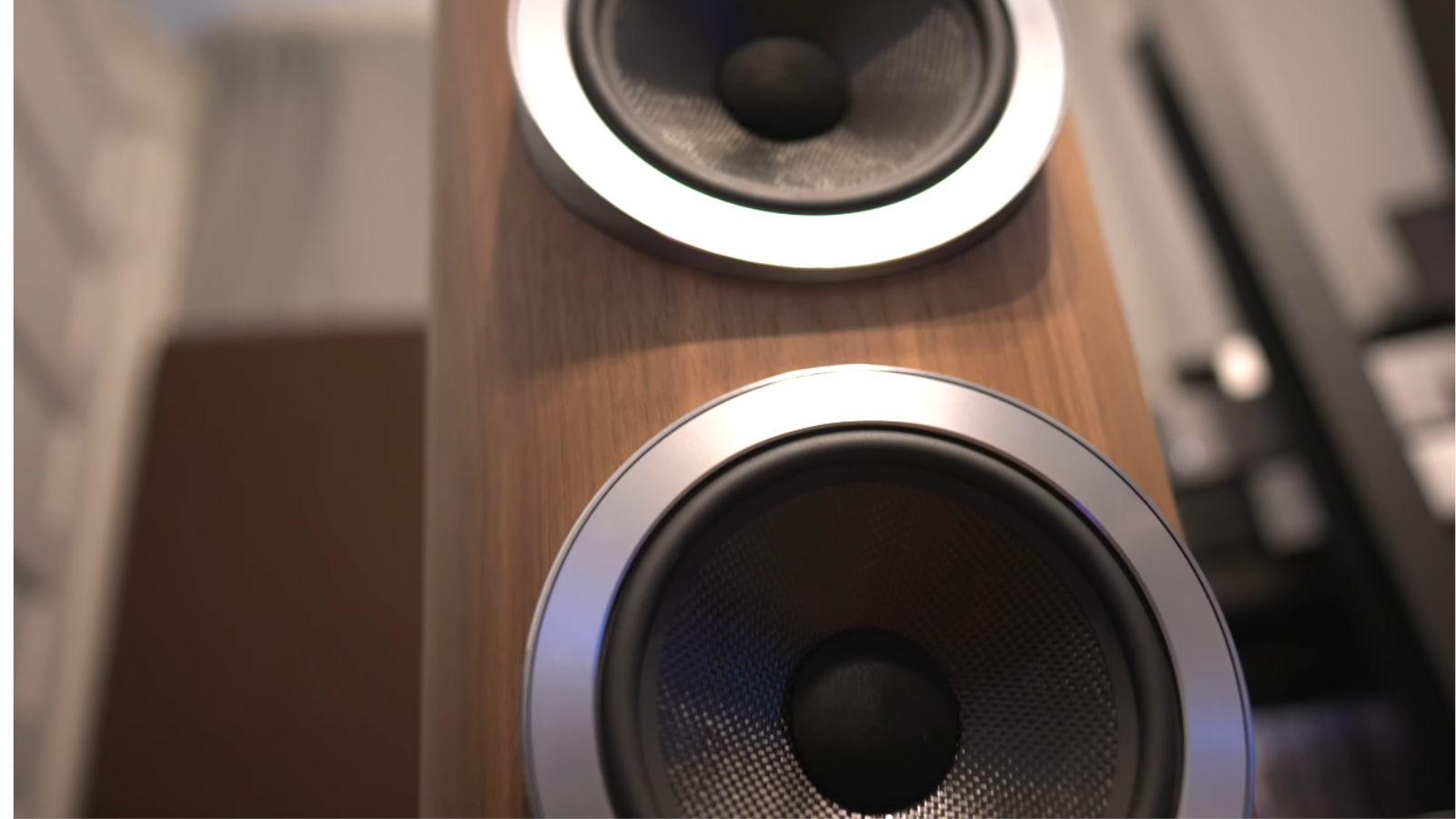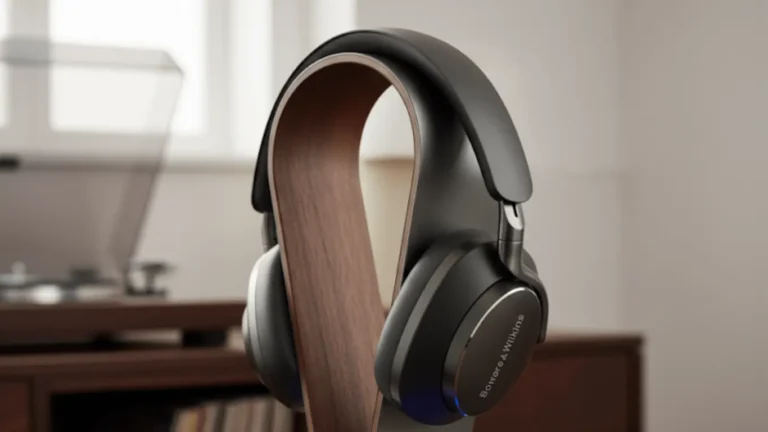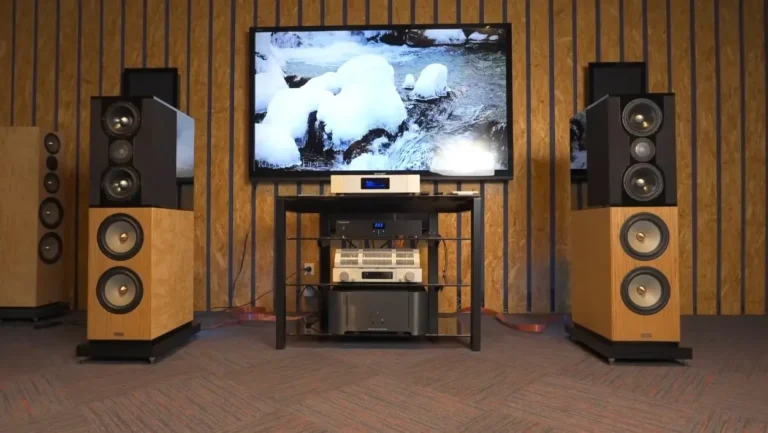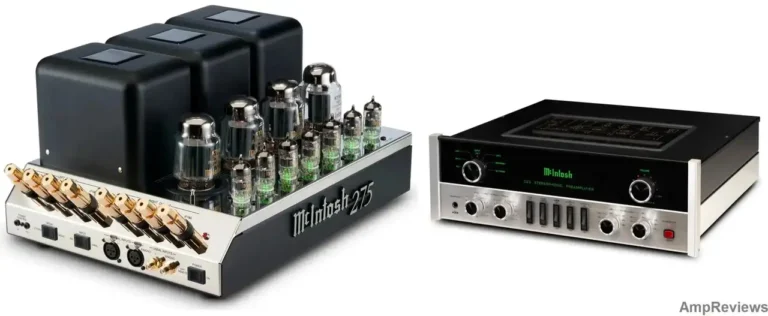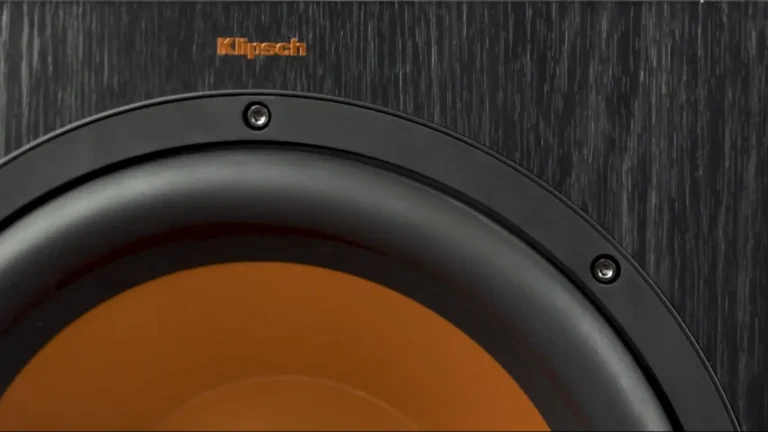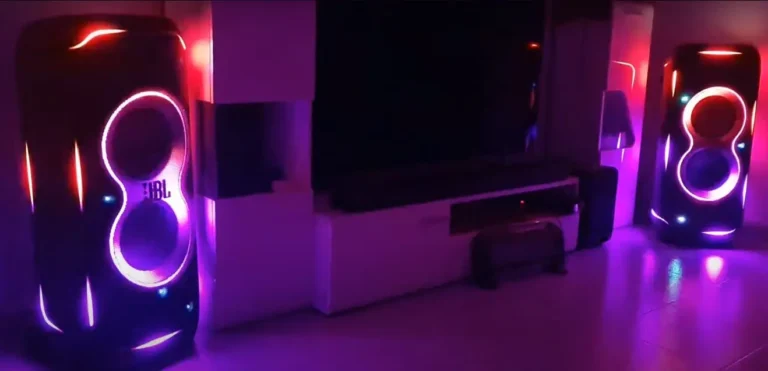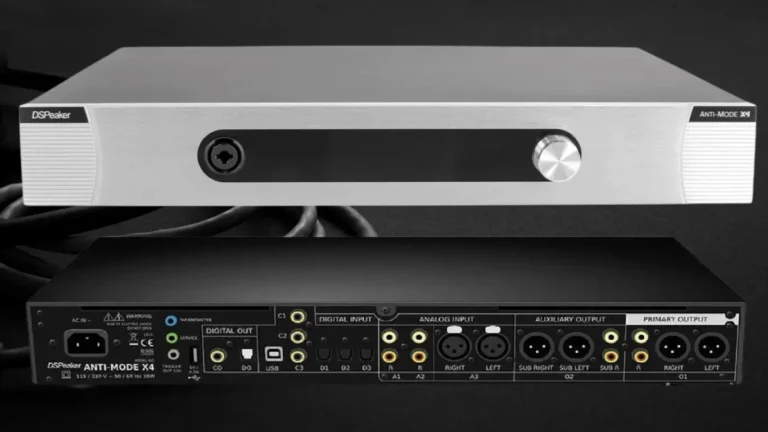B&W 803 D4 Review: Can $25,000 Speakers Really Be Worth It?”
For years, the Bowers & Wilkins 802 has been the best-selling icon of the prestigious 800 Series. But with the arrival of the new D4 generation, its smaller sibling, the 803 D4, seems poised to inherit the throne. Landing at the same price point as the previous 802 D3, the new 803 D4 is a strategically brilliant move by B&W. Having served as a co-reference speaker in our listening room for over six months, this formal review is long overdue. Because to put it simply: this is a truly exceptional loudspeaker.
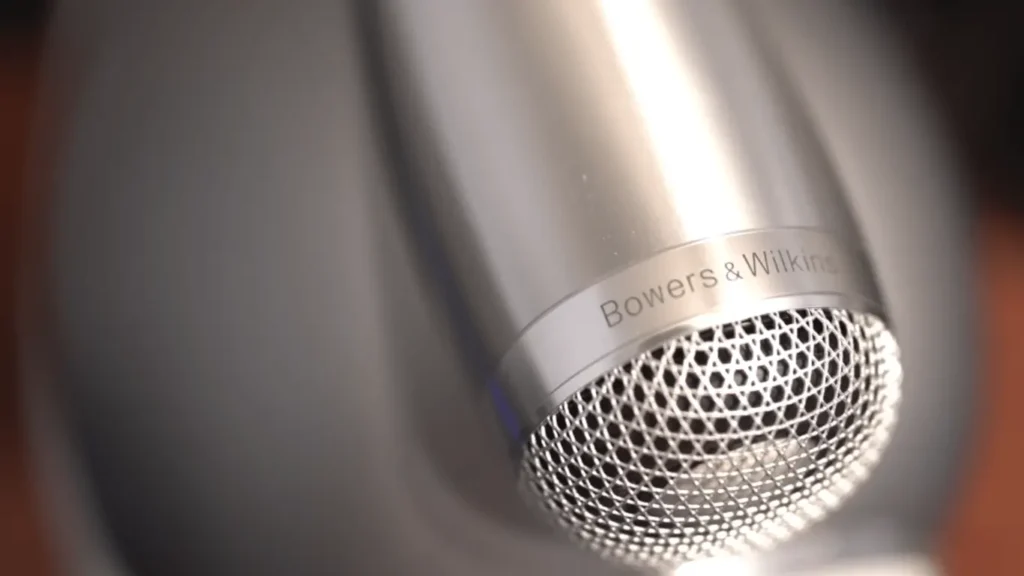
The B&W 800 Series’ presence in legendary recording venues like Abbey Road Studios is more than just clever marketing—it’s a testament to their status as a true monitor-class speaker, trusted by the world’s most discerning sound engineers. While some of those studios still use older generations, B&W has advanced the entire line to the D4 class. The 803 D4, weighing a substantial 62 kg (137 lbs) per side, feels every bit the premium product. Thankfully, the British firm cleverly ships these speakers on wheels, making placement a manageable one-person job. Once positioned and spiked, their elegant form is truly captivating.
A Masterclass in Refinement: Design and Build Quality
When the D4 series launched, some observers felt the changes were merely incremental. On paper, an extended tweeter tube, lower-distortion drivers, and a more rigid enclosure didn’t immediately signal a revolutionary leap.
However, listening tells a different story. When B&W introduces a new generation, the improvements run far deeper than the brochure suggests. The designers have once again refined the iconic 800 series silhouette. Placing a D3 next to a D4, the new models appear sleeker and more cohesive. The quality of workmanship is, once again, second to none. The cabinet’s ingenious metal-reinforced skeleton, wrapped in layers of multiplex wood bent through a complex process, forms an incredibly inert foundation. It’s the finer details that truly stand out: the top of the bass enclosure is now finished in sumptuous Connolly leather, an addition that exudes pure class.
Innovation from the Inside Out: Key Technologies
One of the most sonically significant changes is nearly invisible: the “Biomimetic Suspension” system for the midrange driver. Traditionally, a fabric “spider” is used to keep the voice coil centered, but this component is known to introduce unwanted noise and distortion. B&W’s radical new design replaces the spider entirely, representing a consistent and courageous solution that others have shied away from.
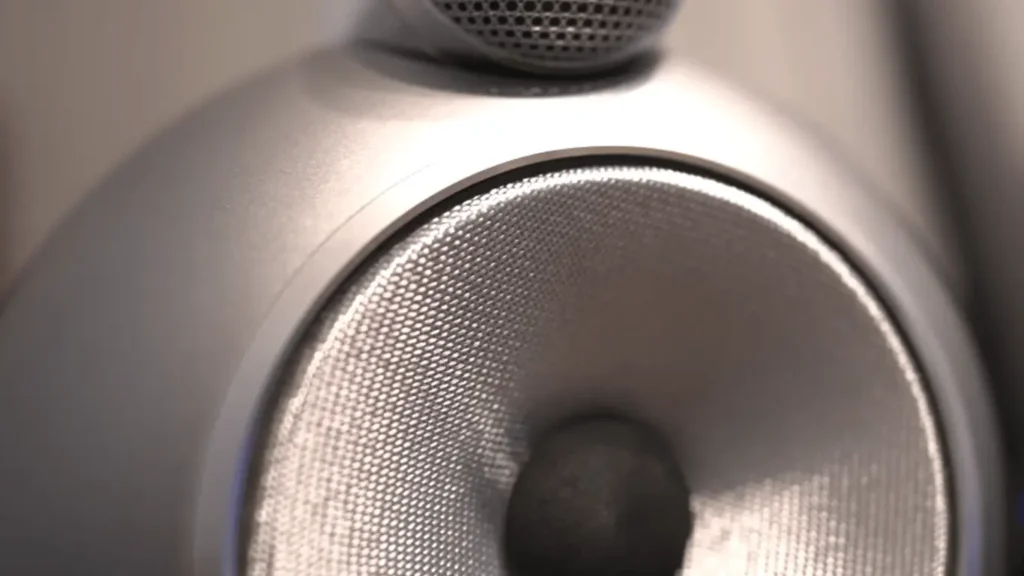
This innovation is found in the 13cm Continuum cone midrange driver of the 803 D4. If older 800 series models had a discernible weakness, it was often a subtle lack of ultimate clarity in the mids. The D4 generation, thanks in large part to this new suspension, sounds noticeably freer and more transparent through this critical region.
The speaker’s name itself tells a story: 800 for the flagship series, 3 defining its size within the lineup, and D4 marking the fourth generation of the diamond tweeter. The 25mm diamond dome tweeter, a B&W hallmark in this price range, is housed in an elongated, decoupled aluminum tube enclosure. It is incredibly stiff, allowing for a breakup frequency well beyond 50 kHz. The midrange driver is similarly isolated in its own “Turbine Head,” a shaped aluminum enclosure optimized to prevent interference.
Finally, two completely revised 18cm (7-inch) Aerofoil cone woofers anchor the sound. Supported by a downward-firing Flowport bass reflex system, these drivers feature improved magnet systems that deliver bass with remarkable stability and control.
Power and Precision: System Matching and Amplification
The B&W 803 D4 is a large, high-end loudspeaker, and it requires amplification of a similar caliber. While its sensitivity is a reasonably high 88.5 dB, its impedance curve reveals the full story.
The impedance (red curve) dips below 3 ohms near 100 Hz, a region where music carries significant energy. Even more telling is the EPDR (Equivalent Peak Dissipation Resistance) value (grey curve), which combines impedance and phase. This measurement shows that at 80 Hz, the speaker presents an exceptionally demanding load on the amplifier. Only amplifiers with truly stable, high-current power supplies can maintain control here.
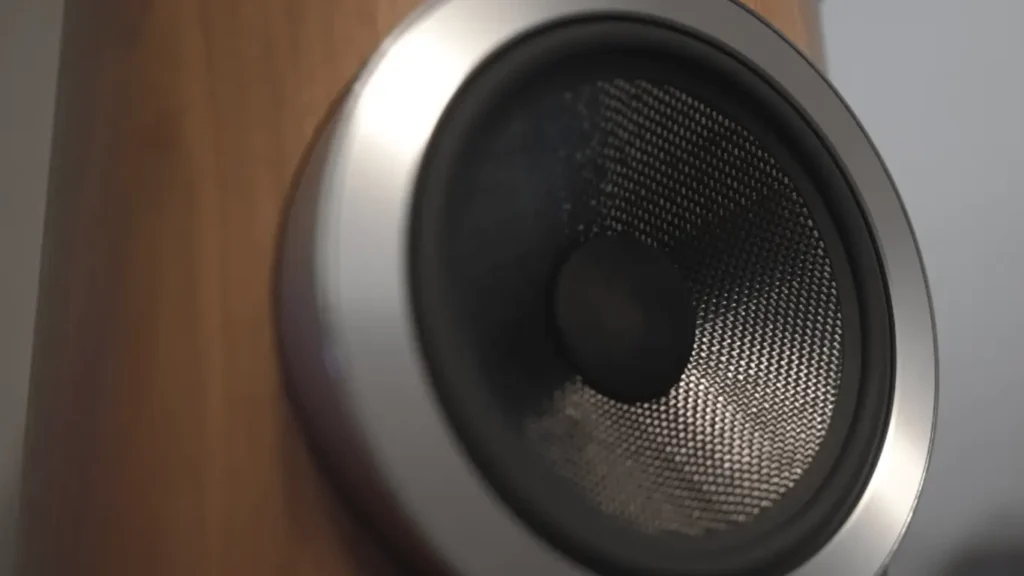
To reach the speaker’s continuous maximum level of 106 dB, a robust 360 watts is required. Pushing it to its 118 dB peak potential would benefit from amplifiers approaching 1,000 watts per channel. We found a magical synergy with the Canor Hyperion P1 and Virtus M1 tube pre/power combo. Despite delivering “only” 150 watts per side, these monoblocks proved to be an ideal partner, their inherent smoothness perfectly complementing the 803 D4’s detailed treble.
The Listening Test: Holographic and Authoritative
It became apparent after just a few tracks that B&W has adjusted the top-end tuning on the 803 D4. The new tuning brings more treble energy, resulting in a presentation that is brighter, more open, and more present than its predecessor.
On the Blue Note tribute to Leonard Cohen, Here It Is, the 803 D4’s talents were on full display. The sound was incredibly open and magnificent, with a relaxed confidence. The drums provided the structure while the bass laid down a confident groove, as if Cohen had been a lifelong patron of intimate jazz clubs. Above all, the tangible, three-dimensional rendering of each instrument set a new standard. The sound seemed to exist completely free of the speakers, projecting pure structure and passion directly into the room.
This holographic imaging also worked wonders with classical music. Listening to the Cleveland Orchestra perform Richard Strauss’s tone poems under Franz Welser-Möst, the 803 D4 acted as a world-class monitor. The strings didn’t just shimmer; you could pinpoint the location of every musician. The soundstage was vast yet precisely drawn, with a heavenly sense of dimensionality.
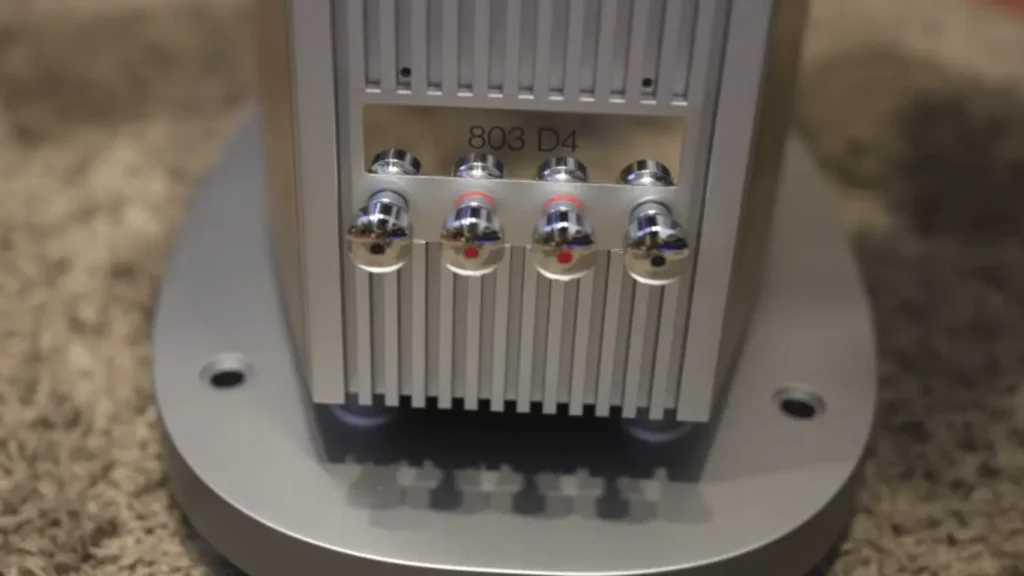
Compared to our reference FinkTeam Borg, the 803 D4 more than held its own. The Borg delivered slightly more authority and visceral impact with timpani and bass drums. However, the B&W countered with a more sparkling, detailed, and perhaps smoother mid-to-high frequency presentation. While older 800 D3 models sometimes struggled against the Borg in vocal authenticity, the 803 D4 amazed with its clarity and realism. This is where the progress from D3 to D4 is most audible.
Final Verdict
It is becoming increasingly difficult to find fault with the modern 800 Series. The B&W 803 D4 is a highlight of the lineup, a speaker whose fit, finish, and engineering set industry standards. Its slightly brighter tuning is a matter of taste, but it brings the advantages of heightened presence and stunning transparency. The speaker’s ability to create a palpable, holographic soundstage is simply breathtaking.
To answer the initial question: Can the 803 D4 replace an 802 D3? Unquestionably, yes. While it may not have the last ounce of bass power of its older, larger sibling, it surpasses it in clarity, transparency, and overall coherence. The 803 D4 isn’t just a great speaker; it’s a new benchmark.
B&W 803 D4 Specifications
| Model | B&W 803 D4 |
| Concept | 3-way, bass-reflex floor-standing speaker |
| Drivers | Tweeter: 1 x 25mm (1 in) Diamond Dome<br>Midrange: 1 x 130mm (5 in) Continuum Cone FST<br>Bass: 2 x 180mm (7 in) Aerofoil Cone |
| Frequency Response | 19Hz to 28kHz (+/- 3dB) |
| Sensitivity | 90dB (2.83Vrms, 1m) |
| Nominal Impedance | 8Ω (minimum 3.0Ω) |
| Recommended Amplifier | 50W – 500W into 8Ω on unclipped programme |
| Max Level (Duration/Peak) | 106 dB / 118 dB |
| Dimensions (H x W x D) | 1165mm x 357mm x 511mm (45.9 in x 14.1 in x 20.1 in) |
| Weight | 62.15 kg (137 lbs) |

